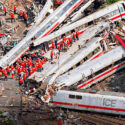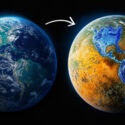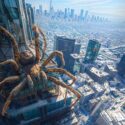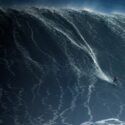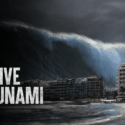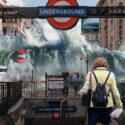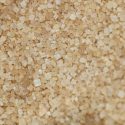You were looking forward to this cruise, but now it’s starting to feel like you’re on the Titanic. And as the ship lurches from side to side, in a battle to stay afloat, you grab the nearest life preserver. Will you be the next person to vanish in these infamous waters?
It’s said to be one of the most sinister spots on Earth. The Bermuda Triangle, also known as the Devil’s Triangle, is an area in the Atlantic Ocean that runs from Florida to Bermuda to Puerto Rico.
There have been 1,000 deaths in the Bermuda Triangle in the last 200 years. And if you’re not careful, you could be next. Why should you watch out for green fog? What keeps killing so many people in the Bermuda Triangle? Is it true that something swallows boats and planes, and they vanish without a trace?
The Bermuda Triangle is also referred to as “The Hoodoo Sea,” “Limbo of the Lost,” and “The Twilight Zone.” By 1977, the Bermuda Triangle had garnered made references to it in “Close Encounters of the Third Kind,” and showed a plane being abducted by aliens. The Triangle covers 700,000 sq km (270,000 sq mi).
And it’s one one of the busiest maritime routes in the world, with ships traveling from North America to Europe and the Caribbean every day, plus plenty of private pleasure craft and cruise ships. But there has to be some reason why 1,000 people died in the Bermuda Triangle in the last 200 years. So what could you do to survive?
Step 1. Check Your Comms
Conduct in-depth maintenance on your vessel’s communication systems, as well as routine safety checks. In most cases, when planes and ships vanished in the Triangle, they never logged distress calls. This means that the crew didn’t know they were in danger until it was too late.
So if you want to be cautious when going through this area, keep an open line with someone on land via radio and electronic communication, and make sure they are aware of your location at all times.
Step 2: Know Where the Anomalies Are
Ancient sailors navigated by the stars, then the compass, and today we have GPS equipment. But in the Bermuda Triangle, ships and planes have reported their compasses going on the fritz.
In one area, magnetic anomalies make compasses point to true north instead of the magnetic north pole. Even Christopher Columbus noted it in his log, back in 1492. So know where it might happen, and have a plan to navigate safely despite inaccurate readings.
Step 3: Watch Out for Weird Fog
If you spot any bizarre-looking fog, such as low hanging fog, or fog with strange green or gray colors, watch out. It’s known as “electronic fog,” and if it surrounds your vessel, you can expect it to affect your navigational systems. One person who lived to tell about it is Bruce Gernon.
In his book, Gernon states he was flying through the Triangle from the Bahamas, en route to Palm Beach, Florida. A fog descended upon his plane, and time suddenly froze in a vortex, which he called “electronic fog.” His plane was missing from radar screens. Later, it re-emerged close to Miami Beach. The strange thing is, he managed to fly 160 km (100 mi), but in 30 minutes less than normal. How could that have happened?
Gernon believes the fog allowed him to travel through time. He writes, “Some of the instruments were malfunctioning. The wet compass was spinning slowly, counter-clockwise, all by itself. The electronic navigational instruments were all malfunctioning. And at the same time, I traveled 30 minutes through time.” So if you see some strange fog on the horizon, get the heck out of there.
Step 4: Avoid Bubbling Seas
Nature creates some powerful forces, including rogue waves. They’ve been cited as the reason why many ships have disappeared in the oceans. And bubbling seas have been listed as a possible reason why ships vanish in the Bermuda Triangle.
Could the methane gas in the seabed have caused hundreds of vessels to disappear? Researchers at the Naval Postgraduate School in Monterey, California tested whether bubbles can sink objects floating on the surface of water. Their lab experiment shows it could happen in an enclosed container. But what about out in the ocean?
Researcher Bruce Denardo says, “If a phenomenon can be made to occur in a lab, it probably occurs somewhere in the natural universe.” So if the seafloor farts, you might not want to be sailing over it.
Our advice is to try to avoid areas with methane deposits, and watch out for storms and hurricanes. Also, steer clear of places where rogue waves and possibly dangerous bubbles could occur.
The Bermuda Triangle is a heavily trafficked part of the world. And despite the reports of missing planes and ships, the possibility of you having a fatal mishap is quite low.
Sources
- “How Cliff Diving Works”. Heather, Kolich. Howstuffworks.
- “Scientist ‘solves’ mystery of the Bermuda Triangle – by claiming there was no mystery in the first place”. Adam, Lusher. 2017. The Independent.
- “Malaysia Airlines Flight 370: Is There A Bermuda Triangle Connection?”. Benjamin, Radford. 2021. livescience.com.
- “24 Things About The Bermuda Triangle People Thought Were True (But Are False)”. Aunindita, Bhatia. 2018. Thetravel.
- “20 Things We’d Rather Not Know About Flying Over The Bermuda Triangle”. Celeste, Galzia. 2018. Thetravel.
- “5 Famous Mysterious Stories of the Bermuda Triangle” Shamseer, Mambra. 2021. marineinsight.com.



